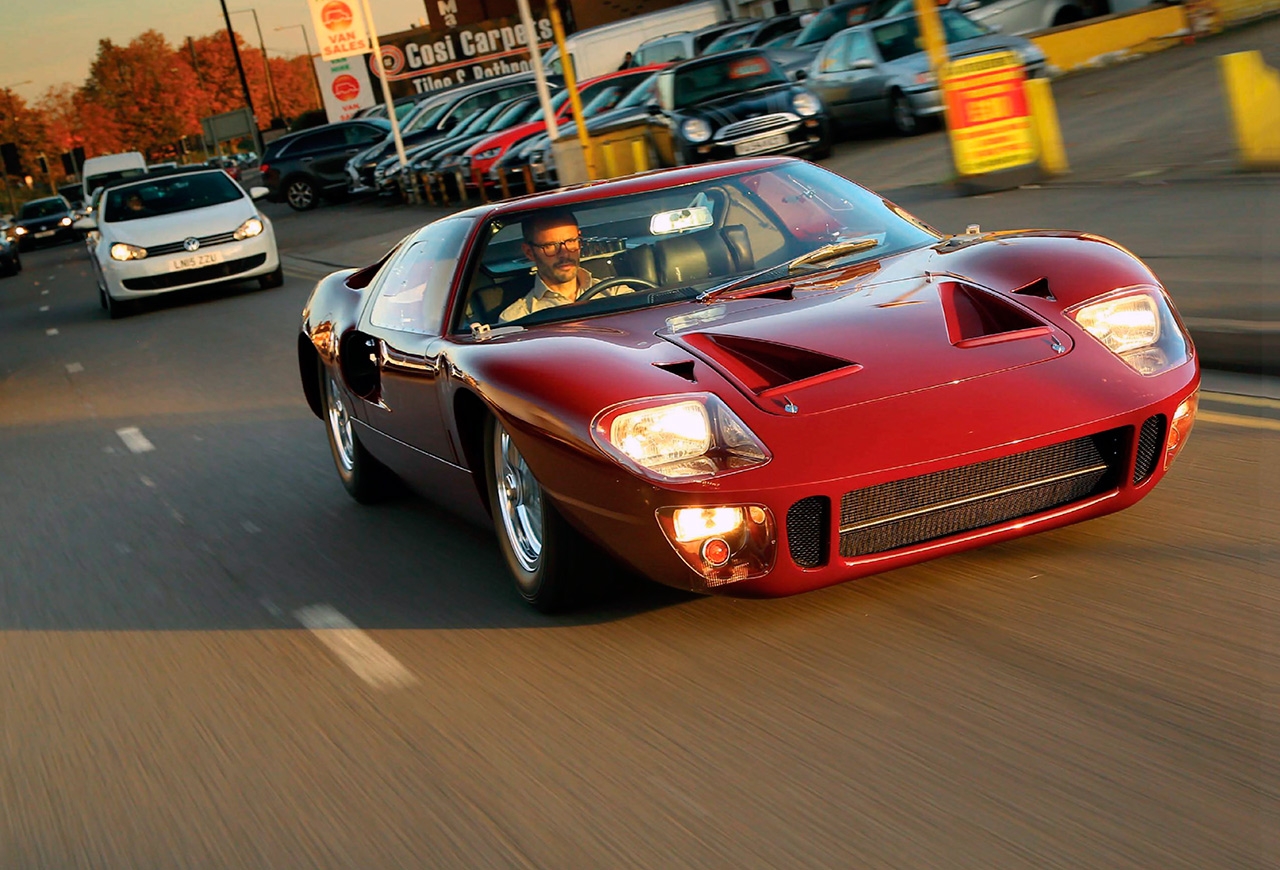
Owners and insiders tell all as Ford’s icon returns to its roots. The GT40’s legend may have been built on the race track, but it also made a stunning road car. James Page takes one back to its birthplace. Ford’s answer to Ferrari Braving rush-hour traffic in a road-going Le Mans legend. GT40 returns to the trading estate on which it was built. Photography Julian Mackie. Archive LAT/Ford/Greg Frost.
ROAD RACER GT40 ON THE ROAD!
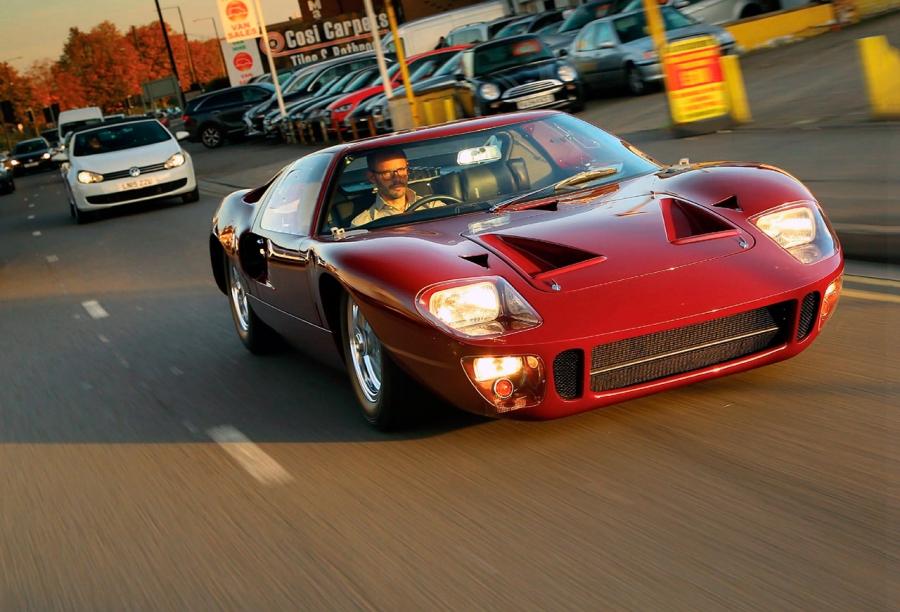
Shy and retiring types need not apply. If you’re going to drive a Ford GT40 on the public road, you need to be prepared for everyone to stop and stare, for passengers in nearby cars to take photographs, for drivers of hot Subaru Imprezas to pull alongside at traffic lights and rev their engines encouragingly. You also need to be aware that, such is the car’s lack of height, you do not appear in people’s rear-view mirror if you’re directly behind them. They can hear you, certainly, but they can’t see you. The experience is not for the faint of heart, but there’s a very good reason why we’re in amongst the modern traffic on the A4 near Slough. As unlikely as it now seems, in the 1960s and ’70s the town perhaps best known for Betjeman and Brent was motorsport central. Lola, Surtees, Frank Williams and Winkelmann Racing were all based here at various times, while story has it Jochen Rindt would come off the M4 at junction seven and routinely powerslide his way around the 270º slip road.
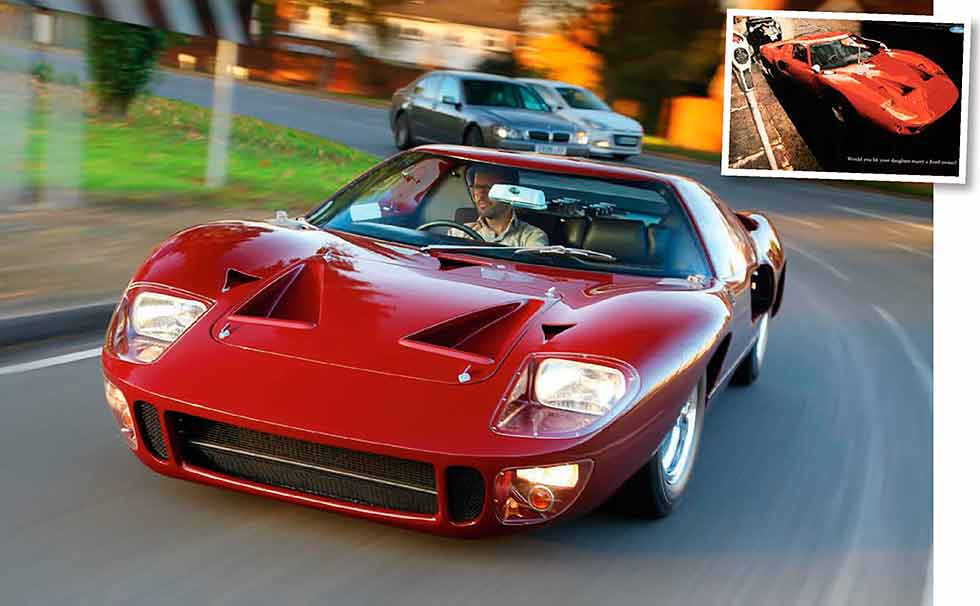
1966 Ford GT40 MK1 Roadcar road test
But we’re here because it was also home to Ford Advanced Vehicles, where ‘our’ GT40, chassis 1059, was built in November 1966. It was shipped to the USA on 23 December along with six other road cars and assigned to Shelby America for a promotional programme. For that reason, it was repainted white with blue stripes. In September ’67, it was sold to the wonderfully titled Stark Hickey Ford Inc, owned by Edward J Schoenherr. In 1973, it passed through the hands of Herbert Wetanson – who owned six over the years – before ending up with Dr Jack Frost in Iowa. Although Frost used it sparingly, he did replace the original bladder-type fuel tanks with aluminium items made by none other than former JWA guru John Horsman.
Frost advertised it in 1990 – ‘1966 Ford GT40 2-door. 4mpg/200mph; interesting trades or a bunch of cash considered’ – but kept it until his death in 2003. It was bought by a European collector in 2012 and fully restored, during which it was finally returned to its original shade of opalescent maroon with black leather.
It now looks nothing short of sensational. Open the door, however, and you’re presented with the challenge of getting in. If you’re tall, it’s not a graceful procedure. If you’re short, you can get away with stepping over the sill and placing your left foot on the seat, then swinging your right leg in – careful not to catch the gearlever – and straight under the surprisingly large steering wheel. At the same time, you slide your left leg down and drop into position.
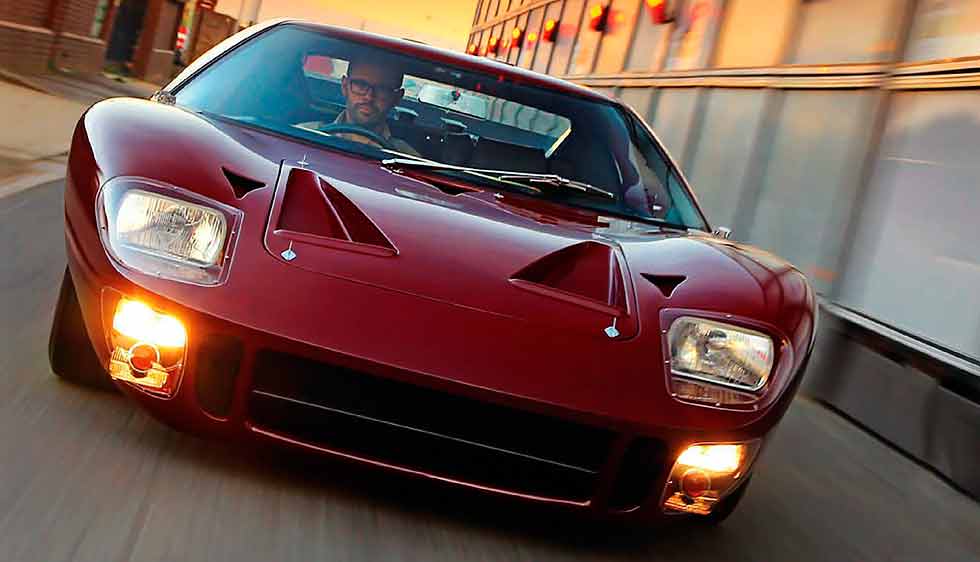
1966 Ford GT40 MK1 Roadcar road test
Thanks to the reclined driving position and the fact that you’re sitting almost on the road itself, straight away you feel like a racing driver. Actually, you get the same feeling just from sitting on the sill section, which is suitably wide because it both bolsters rigidity and houses the fuel tanks each side. You can picture yourself as Chris Amon, chatting things over with Bruce McLaren during practice at Le Mans.
But the impression is heightened inside. The low, wide dashboard has a 200mph speedometer on the far left and a rev counter – redlined at 6500rpm – directly in front. In between and to the far right are the other instruments plus a selection of unlabelled toggle switches. Turn the key, prod the starter down on the central tunnel and, with a touch of throttle, the V8 bursts into life just behind your shoulders.
The five-speed gearbox features a dogleg first, with a lockout for reverse just above it, and a narrow gate. Let out the heavy clutch and the GT40 pulls itself away, growling into the traffic. After only a few hundred yards, you’re aware that your back is getting very warm – not a huge surprise – and all you can really see in the rearview mirror are the eight intake trumpets.
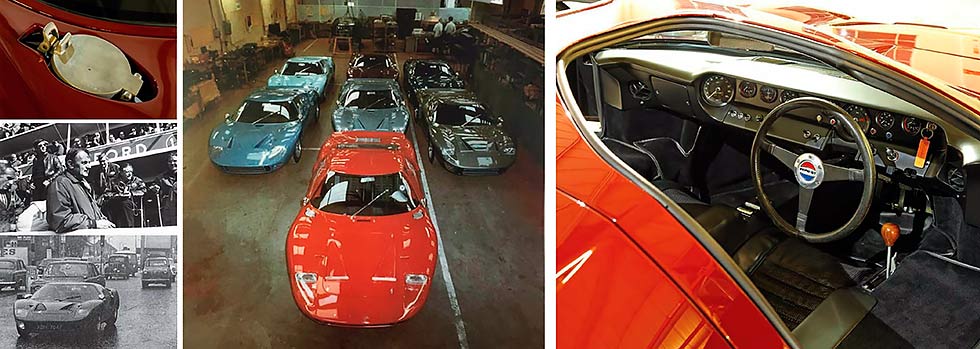
Above: roadgoing versions gained carpets and other trim, but retained the feel of the racers via such touches as the right-hand gearlever. Note the wide sill section that you have to negotiate. Right: John Wyer in his natural habitat – directing proceedings at Le Mans, where his GT40s were twice victorious. Clockwise: GT40 has plenty of grip and little body roll; group of seven road cars at FAV, with 1059 in the centre of the back row; Epping Motor Co’s car in Ford advert.
First gear is good for the best part of 60mph, and even in so-called road spec its manners are undeniably those of a racer. The ride is predictably firm, the steering direct, and none of the feedback is dulled in the slightest. Which is perhaps to be expected when all FAV really did to sanitise the MkI was fit some interior trim, then add door locks, sill badges and Ford lettering on the nose. Gone were the racer’s ventilated seats, though, and the battery was moved from the ‘passenger compartment’ to the engine bay.
As ‘Steady’ Barker put it in an Autocar feature in which he was chauffeured by Innes Ireland, ‘It would be irrational to describe the “street” GT40 as being the ideal touring car’, but that didn’t mean there was any shortage of takers. In 1968, Rodney Lyons, who still runs the Epping Motor Company, found homes for three. Chassis 1025, 1030 and 1035 came to him as a job-lot. Originally intended for Shelby in the US, they’d been returned to the UK, converted to ‘semi road’ spec and used by Shell for a promotional film.
“They actually had four cars,” he remembers. “An agent was selling them, and I had three because the last one was a bit rough. The guy was upset that I wouldn’t take all of them. “I spoke to my bank manager and said that I needed some money to buy stock. He said ‘fine’ and asked what the cars were. I replied that they were three Fords. ‘They seem a bit dear,’ he said. ‘I’d like to have a look at them.’ So when I got them, I took one round to the bank. He came outside, looked at the car, then looked at me, and said: ‘I hope you know what you’re doing!’
“Somebody up in Yorkshire bought one on hire purchase. He took it on a Friday, raced it on the Saturday and did the clutch in, then I got a phonecall on the Monday. He couldn’t really afford it, and I ended up taking the car back. He gave me a couple of hundred quid to fix the clutch, which only cost £75 in the end.” Lyons lent 1030 to a young Autosport reporter by the name of Simon Taylor, and Ford also borrowed it for an advertisement.
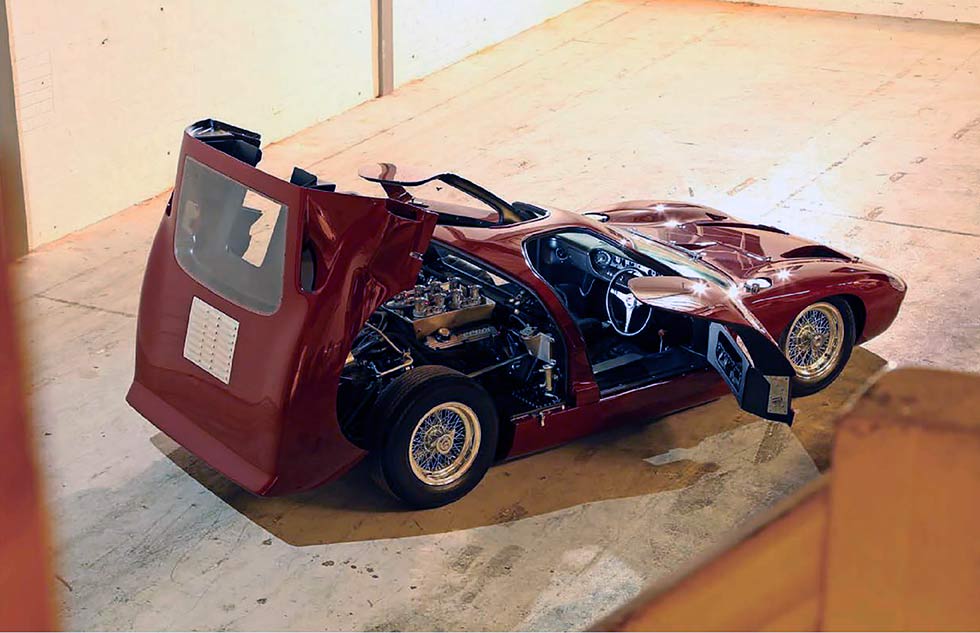
1966 Ford GT40 MK1 Roadcar road test
Taking inspiration from a newspaper headline that was originally used in relation to the Rolling Stones, they photographed it getting a parking ticket with the strapline: ‘Would you let your daughter marry a Ford owner?’
“They were easy to drive,” says Lyons. “I took out the president of the Essex Motor Club in one. I can’t repeat what he said as we went along at 125mph in the wet. You have to remember that there was nothing else like it at the time.” Michael Hipperson would agree with that. In 1971 he bought 1005, which had been raced at Le Mans in 1965 by Scuderia Filipinetti. Unlike the three cars Lyons had, there had been no attempt to water down 1005 in the intervening years: “I went to look at it, and it was exactly as it had been raced. It was even on racing tyres and open exhausts! You can’t contemplate it today…
“When I got it home, Dad appeared at the window and looked very doubtful. I took him for a run up the road and after five miles he was sweating like a pig. He looked at me and said: ‘Well, it’s your decision.’
“It was dreadful on the road, really, but I did 4000 miles in it in three years. I used to take it out on a Sunday morning to pick up the newspaper. Roger Douglas-Hughes [who owned 1002] lived nearby and we’d meet up for a blast.

Clockwise: 1059 returns to the old FAV buildings; Epping listed each of its cars for £5750; MkIIIs in build, with Mirage behind; panel in Perspex provides minimal ventilation.
I used it in sprints, too, but only at Duxford because there was nothing to hit if it spun. “The brakes were useless until they were warm – I used to do the first 10 miles of any journey with my left foot on the pedal to bring them up to temperature. It was noisy, you were sitting between the fuel tanks and you had to be very careful of white lines because of the racing tyres. “And there was no spare, either. My dad tried taking it up to Snetterton once, when my brother and I were racing there. He got a puncture at Thetford and was stuck. There wasn’t even a jack – not that you could have got a jack under it anyway. He refused to drive it after that.”
Over the years, Hipperson owned plenty of exotic machinery. Even though he sold it in 1975, the GT40 stands out – but he admits that’s mostly because “it was so outrageous, rather than because it was great to drive. It felt like it had come straight from Le Mans”.
And it feels like that even in Slough’s rushhour traffic. Eventually – and after ‘dawdling through the soulless subtopia of Betjeman’s favourite town’, to steal Barker’s wonderful phrase – we turn off the A4 and rumble into the town’s trading estate. At the western end of this sprawling complex is Banbury Avenue, one of few roads retaining the buildings that would have been here when the GT40 was new.
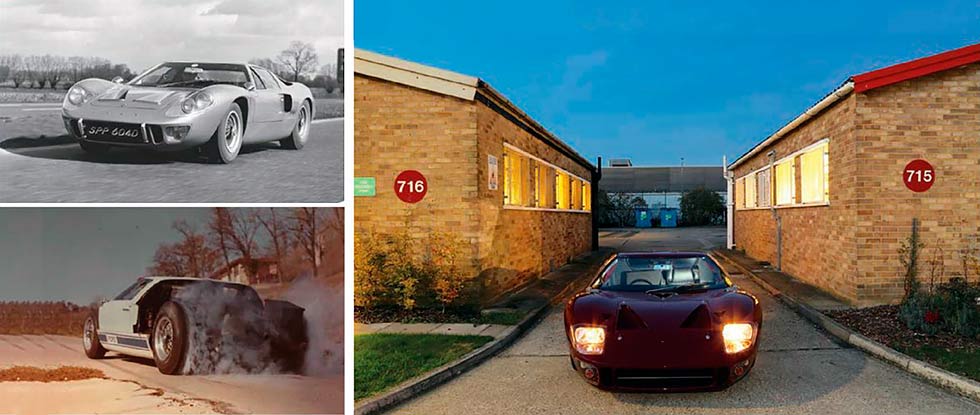
From left: Jack Frost lights up the rear tyres during his ownership of 1059; on Banbury Avenue, where countless GT40s would have been loaded and unloaded in the yard behind; a trepidatious Page behind the wheel – the handbrake is an impossible reach away in the bottom-left corner.
We pull up outside 714-715, which is where ‘our’ car was built and so much history made. Between 1964 and 1966, this was home to Ford Advanced Vehicles – as Autocar put it, ‘a new subsidiary of Ford of Britain which has been set up to develop and build the Ford GT’.
John Wyer was put in charge, but from ’65 the factory’s race programme was handed over to Carroll Shelby’s US-based team. Slough was still responsible for building the cars, though, as well as producing the ‘street’ versions. The prototype road car, chassis 1013, appeared in January 1966 and was used by Ford as a press demonstrator wearing the registration number OVX 355D. Ford withdrew from racing in 1967 following the GT40’s second Le Mans win (both had come courtesy of the American-developed 7-litre MkII). That could have been that, but after Advanced Vehicles had been phased out at the end of ’66, Wyer had stayed at Banbury Avenue and joined forces with John Willment to form JW Automotive Engineering Ltd. From January ’67, and with backing from Gulf, the independent firm continued to build, service and race GT40s. That would pay dividends in 1968, when the MkII – as well as JWA’s own GT40 development, the ’67 Mirage – was outlawed following the imposition of a 3-litre limit for Group 6. The elderly GT40 MkI was therefore given a new lease of life in Group 4. JWA converted its Mirages back, and over the next two seasons the Slough outfit gave the car a glorious swansong.
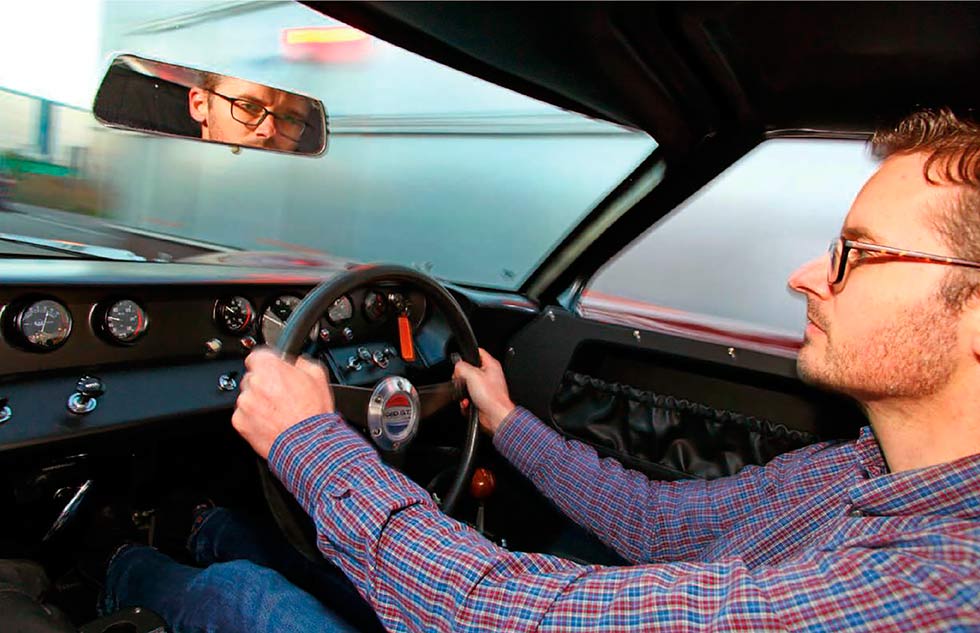
1966 Ford GT40 MK1 Roadcar road test / RHD interior
“That period, until 1970, was the only time in Wyer’s career when he could concentrate 100% on what he did best – running a race team,” says Maitland Cook, who started at Banbury Avenue in ’67. “He wasn’t his own master from 1963 to ’66. Ford called the shots. Later, he didn’t have the terrible politics, and the team was lean, efficient and focused. All of his heroes were military people, and he always said that the ideal race team was like a commando unit, with everyone knowing exactly what they were doing.
“With Gulf, there was a clear understanding and a clear definition of roles. He had very able lieutenants in Horsman and [David] Yorke. Wyer was obviously the field marshal, but Horsman was in charge of engineering. He sacrificed everything – working long hours, cancelling family holidays, that sort of thing.
And the engineering side of things was super. By 1968, there were no real problems with the GT40, and Horsman was a vital cog in that.
“That year, we were competing for the championship so it was very hard work with long hours. But the atmosphere was good. There’s this legend that Wyer was impossible. He was a tough taskmaster, yes, but he was tougher on himself than anyone. And because he was so committed, he expected the same from you. If he knew that you’d give 100%, he’d do the same for you and do everything he could to help.”
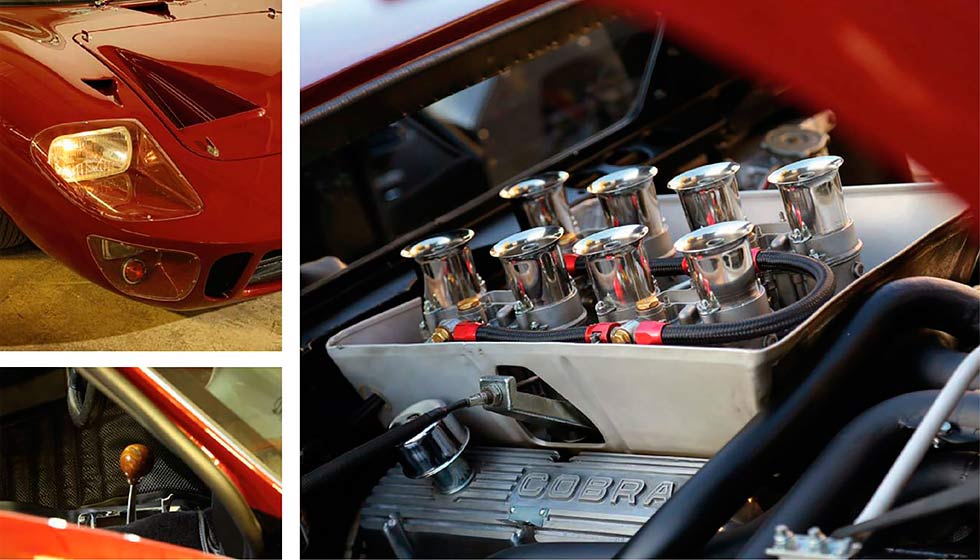
From top left: Innes Ireland stops at the Green Man near Silverstone during his test of the first GT40 road car – OVX 355D; Michael Hipperson’s parents weren’t hugely enamoured with chassis 1005, which had been raced at Le Mans in 1965; Ford’s 289cu in V8, here in High Performance spec.
In 1968, JWA won Le Mans with the MkI of Pedro Rodríguez and Lucien Bianchi, which Cook recalls with a wry touch: “Once the deal had been done to hand over spares and suchlike, there was no contact with Ford until we started winning. At Le Mans, [PR boss] Walter Hayes suddenly appeared early on the Sunday morning. He was good friends with Wyer, but Wyer’s remarks weren’t entirely complimentary!”
In ’69, the team did it again, and with the very same car. In the hands of Jacky Ickx – who Cook rates as the best of JWA’s stellar driver line-up – and Jackie Oliver, chassis 1075 pipped the Hans Herrmann/Gérard Larrousse Porsche 908.
By 1970, however, the Fords were gone from Banbury Avenue. JWA had switched to running Porsches and another sporting legend was just beginning – that of the Gulf 917s.
Number 715 is now occupied by film-processing company Cinelab, and everyone here is familiar with the building’s past. As they stream outside to take pictures, we apologise to boss Adrian Bull – a genuine enthusiast who has a copy of Horsman’s book Racing in the Rain on his desk – for our effect on his team’s productivity.
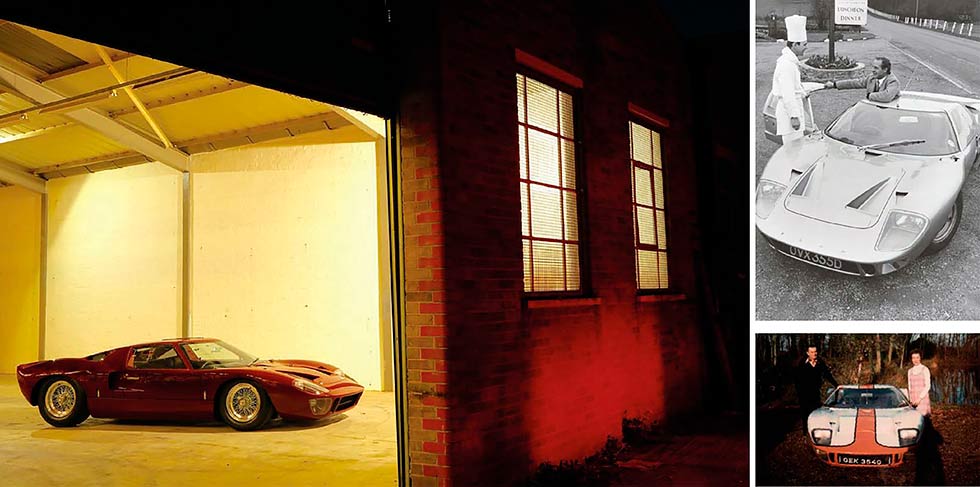
From main: Borrani wire wheels were fitted from new, but only recently has 1059 been returned to its original colour; MkI has single front lights – MkIII had twin units; narrow gate for ZF gearbox.
It would be wrong to suggest that you take GT40s for granted at meetings such as the Goodwood Revival, but there’s something about seeing one out of context that has made today even more special. Whether it’s parked up on a Slough industrial estate or battling with modern SUVs, this legendary sports-racer retains the ability to stop people in their tracks.
Thanks to Max Girardo and Marcus Willis at Girardo & Co, which is offering the featured GT40 for sale: www.girardo.com, 020 3621 2923; Adrian Bull and everyone at Cinelab
The MkIII
GT40 guru Ronnie Spain quotes the actual number of chassis built, including the various prototypes, as being 134. There were 87 ‘production’ MkIs, MkIIs and MkIVs in total, with the MkIs appearing in both road and race trim. The MkIII, however, was a slightly different beast. Only seven were made, with the first being completed at Slough in late 1966 – SPP 604D was the right-hand-drive prototype and later owned by John Wyer. The first left-hand-drive MkIII, meanwhile, made its public debut in April ’67 at the New York Auto Show.
Intended to be a more civilised GT40 road car, the MkIII featured the 289cu in engine, twin headlights, raised front wings, opening windows (even in road spec, the MkIs made do with a Perspex panel) and an extended tail. There was a more plush cabin with a central gearlever and handbrake.
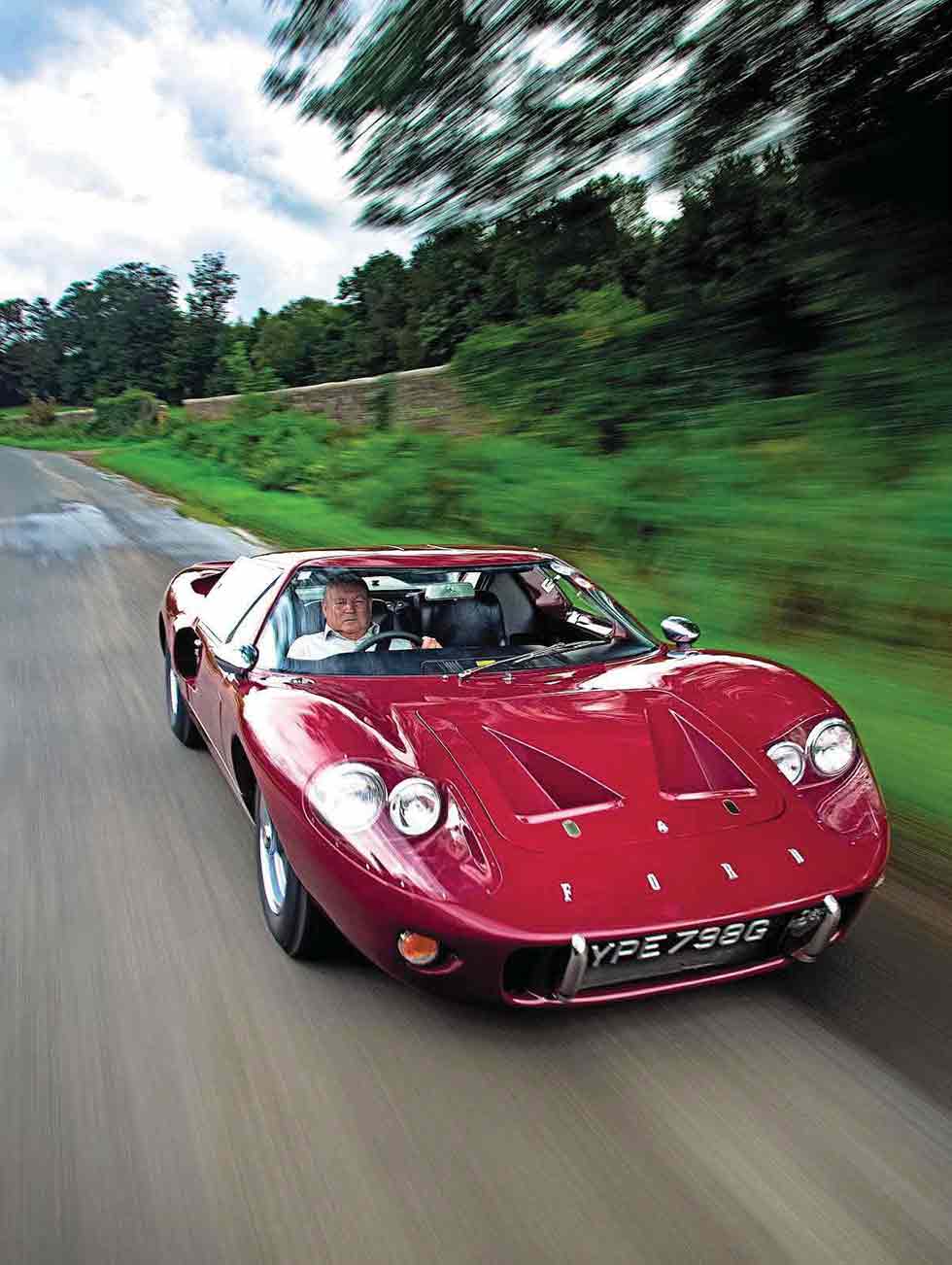
When Richard Feast drove one for Autosport in 1972, even Ford’s press officer said: “Of course, there are people who don’t regard it as a real GT40.” A single Holley replaced the Webers, but the MkIII still gave more than 300bhp and it acquired the welcome habit of not roasting its occupants, too. ‘Wherever it went, it was the centre of attention,’ wrote Feast, and in that respect it was every inch a pukka GT40.
Prototype right-hooker pictured on a quiet M4.
‘BANBURY AVENUE IS WHERE OUR CAR WAS BUILT AND SO MUCH HISTORY MADE’
TECHNICAL DATA 1966 Ford GT40 MK1 Roadcar
Sold/number built 1966-’1969/31 (all road cars)
Construction steel monocoque with glassfibre bodywork
Engine all-iron, pushrod 289cu in (4728cc) V8, four Weber carburettors
Max power 390bhp @ 7000rpm
Max torque 325lb ft @ 5200rpm
Transmission ZF five-speed manual, RWD
Suspension independent, by front double wishbones rear trailing arms with transverse upper link, lower wishbones; anti-roll bar f/r, tubular dampers, coil springs
Steering rack and pinion
Brakes all discs
Length 13ft 4in (4064mm)
Width 5ft 10in (1778mm)
Height 3ft 4 ½ in (1028mm)
Wheelbase 7ft 11in (2413mm)
Weight 2237lb (1017kg)
0-60mph c4 seconds
Top speed 170mph
Mpg 14
Price new 1966 UK £6647 7s 11d
Now 2016 UK c£3million
Supercar on test
It was 49 years ago, but for me it could have been yesterday. In 1968, the GT40 was one of the world’s great endurance racing cars, with two more Le Mans victories still to come. I was the 23-year-old junior on Autosport who took the phone call: a man in Essex was looking for some exposure for the three GT40s he had for sale. One red, one yellow, one green, and all street-legal: would I like to drive one for the afternoon?
It was pouring with rain, of course. I set off in the yellow one, thinking it would be more visible in the murk, but it ran out of petrol 100 yards up the road. No problem: take one of the others. With the single wiper dancing across the misty ’screen and trucks and buses towering above me, I set off down Ilford High Street. I wrote: ‘People stood stock-still on zebra crossings and stared in open-mouthed amazement. Lorry drivers leant down from their cabs and offered to swap. Schoolboys jumped off the pavement with delight and waved.’
Once on the A12, I felt brave enough to prod the long-travel throttle a bit further. The five-speed ZF ’box was geared for 60mph in bottom and 95 in second. On this greasy road I discovered that, with racing tyres front and rear, grip was in short supply.
I was completely unqualified to evaluate this electrifying machine but, striving to include some technical detail, I noted that ‘above the exhaust’s glorious music one can clearly hear the clatter of the floating brake calipers and the gobble of the fuel pumps.’ And I commented favourably on the estimated fuel consumption of 17mpg – fuel was then 15 bob a gallon, or 16p a litre.
At that stage of my life it was far and away the most dramatic motorcar I’d ever driven, and predictably I headed my piece ‘A Street Car Named Desire.’ Simon Taylor
Taylor gingerly negotiates a wet Ilford High Street.






